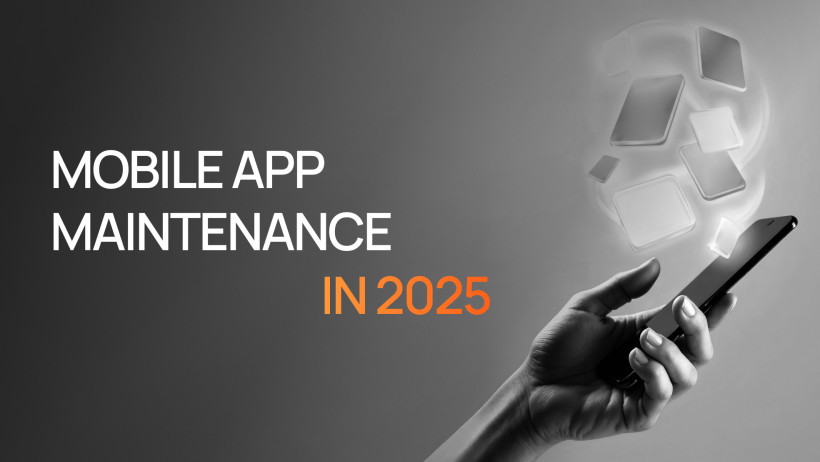Launching a mobile app feels like a huge achievement and it is. But if you think the hard work ends after publishing your app to the App Store or Google Play, think again. Post-launch app management is where long-term success is truly determined. Without a consistent maintenance strategy, even the most innovative apps risk becoming outdated, insecure, or abandoned by users.
In 2025, mobile app maintenance is no longer optional, it’s a non-negotiable investment to keep your product relevant, fast, and secure. Let’s dive into what app maintenance really means today, the typical app maintenance costs in 2025, and the best practices that ensure your app continues to deliver value.
What Is Mobile App Maintenance?
At its core, app maintenance is the continuous process of supporting, updating, and optimizing an app after its launch. Think of it as taking your car to regular servicing — without it, performance declines, safety issues arise, and eventually, it breaks down. An app, just like a vehicle, needs ongoing care to function at its best.
Maintenance is not a one-time effort but a long-term commitment that ensures your app adapts to new technologies, changing user behaviors, and evolving security requirements. Beyond just keeping things running, it’s about future-proofing your app so it can scale as your business and audience grow.
The key objectives of app maintenance are:
- Keeping your app bug-free with regular bug fixing and patching.
- Ensuring OS version compatibility (iOS and Android updates roll out yearly).
- Adding feature enhancements to stay competitive and user-friendly.
- Maintaining security with preventive maintenance and compliance updates.
- Optimizing app performance monitoring to detect issues before users do.
In 2025, maintenance is about anticipating them before they affect your users. A well-maintained app sends a strong message: your brand values reliability, safety, and continuous improvement.
Core Types of App Maintenance

Not all maintenance tasks are created equal. In practice, companies deal with four main categories:
Corrective Maintenance
This covers bug fixes and emergency patches. For example, if a payment gateway suddenly fails or a login feature stops working after an update, corrective action ensures minimal disruption and quick recovery.
Adaptive Maintenance
Mobile ecosystems evolve constantly. API updates, OS-level changes, and new device requirements demand quick adjustments to keep your app running smoothly. Without adaptive maintenance, your app could become incompatible with the latest iOS or Android versions, leading to frustrated users or even removal from app stores.
Perfective Maintenance
Here, the focus is on feature enhancements and usability improvements. Maybe your analytics show that users drop off at checkout — redesigning that flow or adding new payment options is perfective maintenance. It’s about refining the user experience and keeping your app competitive in a crowded market.
Preventive Maintenance
Proactive strategies like performance monitoring, cloud infrastructure updates, and security patches fall under preventive maintenance. This is about spotting vulnerabilities, reducing downtime risks, and stopping issues before they snowball into serious problems. Preventive care saves costs in the long run and builds user trust.
Average Costs of Maintaining an App in 2025
How much should you expect to spend on app maintenance? The short answer: it depends. When discussing app maintenance costs 2025, most businesses find that expenses vary depending on complexity, integrations, and user base.
- Monthly benchmarks: Most apps cost between $2,000 and $6,000 per month to maintain.
- Annual range: A stable app typically requires 15–25% of its initial development cost annually.
Factors Affecting Pricing
- Complexity: A banking app with secure logins costs more to maintain than a simple fitness tracker.
- User base size: More users = more server costs and support requests.
- Third-party integrations: APIs, payment gateways, and external services add recurring costs.
In-House vs Outsourced Support
- In-house teams provide control but increase overhead.
- Outsourced maintenance contracts often reduce costs while ensuring a Service Level Agreement (SLA for app support) guarantees response times and accountability.
What Should Be Included in Your Maintenance Plan?
A robust app maintenance contract should clearly outline what’s covered and how responsibilities are handled. This ensures that everyone from developers to business stakeholders knows what to expect and can plan ahead. At minimum, it should include:
- App performance monitoring – regular tracking of uptime, load speed, error rates, and crash reports to detect issues early.
- Release cycles and version control – structured rollout schedules and proper documentation to avoid conflicts and ensure smooth updates.
- Security and compliance updates – ongoing patches and audits for regulations like GDPR, HIPAA, or PCI DSS, keeping your app safe and legally compliant.
- User feedback implementation – a process for reviewing, prioritizing, and acting on customer feedback so improvements align with real user needs.
- Preventive maintenance measures – proactive updates for APIs, libraries, and cloud infrastructure to prevent downtime or compatibility issues.
Without a clear plan, maintenance becomes reactive and therefore more expensive, disruptive, and frustrating for users. A well-structured maintenance plan is not just about stability, it’s about ensuring your app continues to grow and deliver value over time.
App Store and OS-Level Requirements
Apple and Google frequently update their guidelines and operating systems, and staying aligned with these changes is a crucial part of mobile app support and updates. In 2025:
- iOS updates usually release every September, often introducing new features, design standards, and security requirements.
- Android updates follow a similar yearly cycle, with additional patch releases throughout the year.
Failing to adapt doesn’t just mean your app may look outdated, it could result in loss of compatibility, broken functionality on new devices, or even complete removal from app stores.
That’s why regular OS version compatibility checks, timely updates, and proactive adjustments to meet App Store and Google Play policies are essential. Keeping pace with these evolving requirements ensures your app continues to run smoothly, delivers a consistent user experience, and maintains its visibility in crowded app marketplaces.
How to Maintain a Mobile App: Best Practices

Want to reduce costs and keep users happy? Follow these best practices:
- Maintain a documented codebase – makes updates faster and easier.
- Set up regular feedback loops – collect user feedback through surveys and in-app tools.
- Use prioritization frameworks – not all bugs need fixing immediately; focus on high-impact ones first.
- Automate monitoring – with cloud-based tools that track performance and send alerts.
- Plan proactive updates – instead of waiting for critical failures.
Common Maintenance Mistakes to Avoid
Even experienced teams can fall into traps that make app maintenance more costly and less effective. Here are some of the most common pitfalls, and why you should avoid them:
- Ignoring minor bugs – small glitches may seem harmless, but over time they pile up, create poor user experiences, and can lead to bigger system failures that are harder (and more expensive) to fix.
- No SLA in place – without a clear Service Level Agreement that defines response times and responsibilities, critical issues may linger unresolved, frustrating users and harming your brand reputation.
- Delayed critical updates – postponing an OS compatibility update or a security patch could expose your app to crashes, breaches, or even removal from app stores.
- Reactive-only approach – relying solely on fixes after problems occur rather than investing in preventive maintenance often leads to downtime and lost opportunities.
- Lack of user feedback integration – skipping regular feedback loops means you might be fixing the wrong problems while ignoring what matters most to your users.
Avoiding these mistakes ensures smoother operations, stronger security, and happier users, all of which translate into long-term app success.
How WEZOM Ensures Long-Term App Success
At WEZOM, we understand that mobile app development doesn’t end at launch — it’s only the beginning. To keep your product thriving in a fast-changing digital landscape, we provide more than simple fixes. Our dedicated maintenance teams focus on long-term stability, security, and growth.
Here’s how we do it:
- SLA-backed support to guarantee uptime, fast response times, and peace of mind.
- Proactive performance tracking with advanced monitoring tools that identify potential issues before they affect users.
- Continuous updates and improvements guided by user behavior, market shifts, and the latest technology trends.
- Cloud infrastructure updates to ensure your app remains scalable and resilient.
- User feedback implementation to align your app’s evolution with real customer expectations.

Conclusion
In 2025, mobile application maintenance is more than just an operational task, it’s the backbone of sustainable app success. From routine bug fixing to advanced preventive maintenance, from ensuring OS compatibility to implementing user feedback, every update you make directly impacts performance, security, and user satisfaction. A well-maintained app not only works smoothly but also demonstrates to users that your brand is committed to reliability and continuous improvement.
Skipping maintenance is a guaranteed way to fall behind competitors, lose user trust, and expose your app to security vulnerabilities. On the other hand, with the right plan, documented processes, and trusted partners, post-launch app management can transform from a cost center into a genuine growth strategy that boosts retention, engagement, and revenue.
Ready to keep your app fast, secure, and scalable for the long run? Let’s explore how we can help you achieve long-term success and future-proof your digital product.

